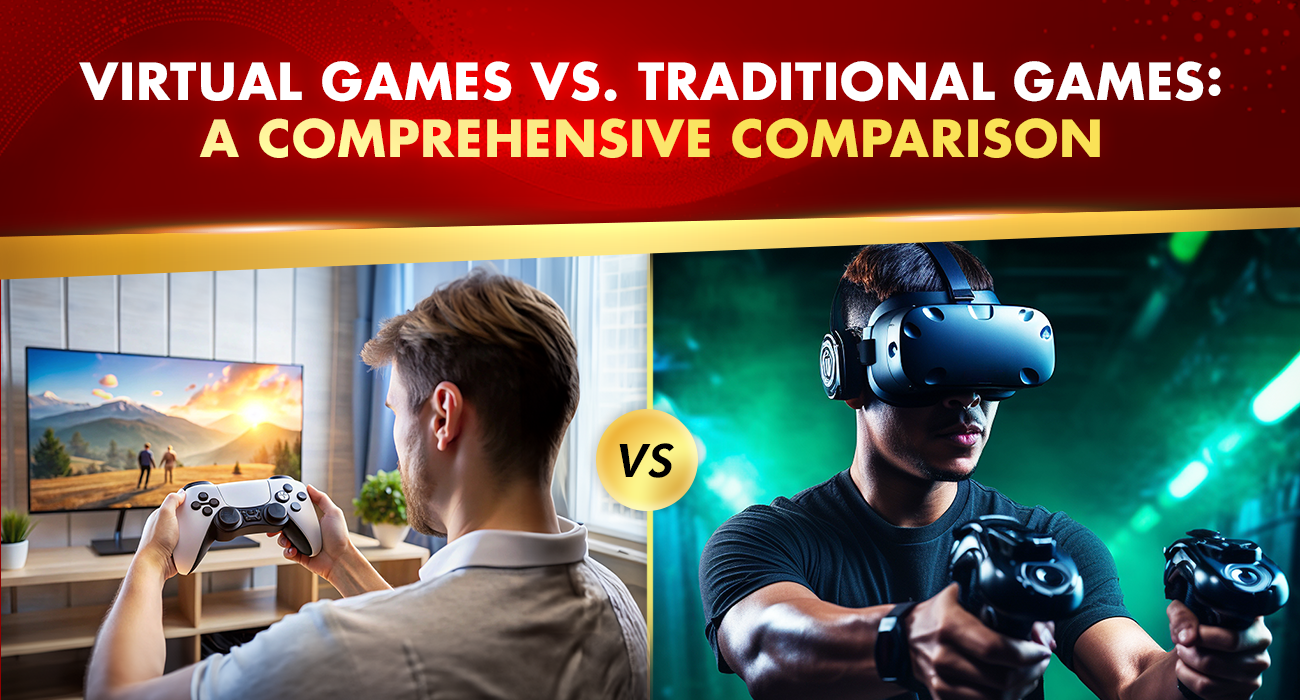Everything in the gaming world has changed dramatically over the last few decades, with virtual games taking center stage in the digital age. However, traditional games, which have been enjoyed for generations, are still considered to be near and dear to the hearts of many. As the gaming industry expands and becomes more significant, so does the debate between virtual games and traditional games. Each type of game offers varied experiences, which can only be grasped once the player becomes able to appreciate the differences between them.
Accessibility and Convenience
Accessibility is one of the significant distinguishing elements between virtual games and traditional games. With virtual games, it is possible to play from almost any location at just about any time using smartphones, computers, and gaming consoles. It is this ease of access that made virtual gaming so astoundingly popular – a player could join the game with a button click rather than having to set up equipment or physically be there manually.
On the other hand, traditional games such as board games or sports entail a physical presence that may be less convenient to orchestrate. Traditional games also provide the kind of social interaction with which virtual games do not compete in all their forms. Organizing friends or family to spend an evening playing a board game or joining a team sport can create memories and form bonds that no virtual experience can exactly match.
Diversity and Inventing Games
The main advantage of virtual games is the ability to have a massive variety in terms of experience – adventure games, puzzle games, simulation games, and even experience in virtual reality. Advances in technology have been able to break those boundaries for developers to make the scene come alive and provide a real-life experience. For example, places like Khelraja have developed virtual betting games that bring the excitement and thrill of watching traditional sports into a virtual experience. Virtual gaming innovation has no bounds because new titles and concepts arise in the marketplace, keeping gamers interested.
Traditional games are not homogeneous, although they rely more on the physical and real world. Board games and card games are examples of traditional games, as are sports, with rules and apparatus confining the scope of creativity compared to virtual games. Yet traditional games endure because they offer classic, truly time-tested forms of amusement. For example, chess was invented millennia ago and remains popular today because it requires strategy and skill to be able to cross generations.
Physical Activity and Health
It goes without saying that there is an obvious edge in physical activity when talking about traditional games. Outdoor games and sports promote movement, fitness, and active participation that favors mental and physical well-being. Playing traditional games like football, tennis, or even simple playground games improves coordination, strength, and health in general.
Virtual games are primarily sedentary. Extended periods of playing can even cause eye strain and bad posture, and some levels of physical activity could be low. Not all virtual games are passive, though. The new VR (Virtual Reality) games and motion-controlled games allow players to engage in more physically active virtual experiences, but they are definitely less beneficial than traditional sports.
Social Interaction
Some of the most traditional games, including most team sports and group board games, encourage face-to-face interaction and cooperation. Such activities can help build social bonds, improve communication, and foster that feeling of camaraderie. Virtual games, particularly multiplayer online games, also provide social contact but in a different way. Players are connected to others across the globe, where they can communicate through voice chat or other messaging systems. One of the advantages that virtual games bring is global connectivity, although interactions tend to be less personal compared to traditional games.
There is a specific value in both types of virtual games for the office. There is literally no other platform that could provide you the ease of convenience and selection and also brought into your residence. These are for people looking for varied games and experiences that you can only get from a console. The games of our childhood not only provide a way to get up and move social interaction but also provide decades-old entertainment. Whether digital thrill-seeking via virtual games or the hands-on fun only traditional gaming can provide, it is impossible not to make your mark on the ever-evolving world of receiving pleasure electronically.
Also read: The Future of Augmented Reality in Virtual Games: Trends to Watch






